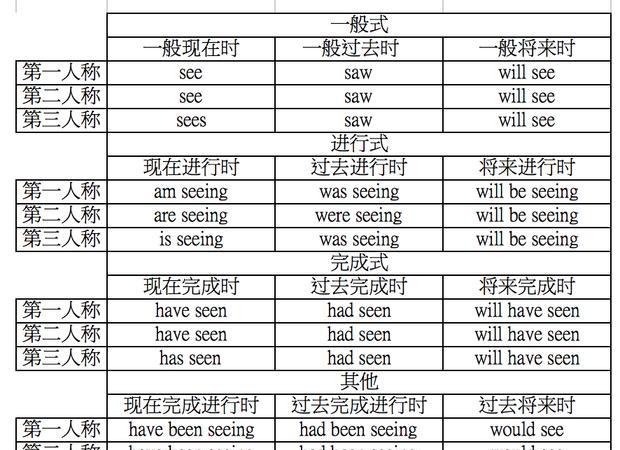英语动词see的时态变化包括现在时(如I see, He sees, They see),过去时(如I saw, She saw, We saw),现在完成时(如I have seen, He has seen, They have seen)和将来时(如I will see, She will see, They will see)。理解这些规则可以帮助我们更好地使用这个词汇。

现在时态
在现在时态,see的变化规则如下:
- 第一人称单数(I):I see
- 第二人称单数(You):You see
- 第三人称单数(He/She/It):He/She/It sees
- 第一人称复数(We):We see
- 第二人称复数(You):You see
- 第三人称复数(They):They see
例如:
- I see a bird in the sky.
- He sees his mother every day.
- They see the movie together.
过去时态
在过去时态,see的变化规则如下:
- 第一人称单数(I):I saw
- 第二人称单数(You):You saw
- 第三人称单数(He/She/It):He/She/It saw
- 第一人称复数(We):We saw
- 第二人称复数(You):You saw
- 第三人称复数(They):They saw
例如:
- I saw a beautiful sunset yesterday.
- She saw a big spider on the wall.
- We saw the concert last night.
现在完成时态
在现在完成时态,see的变化规则为have/has seen。其中have用于第一人称和第二人称复数以及第三人称复数,has用于第三人称单数。
例如:
- I have seen this movie before.
- He has seen the Eiffel Tower twice.
- They have seen each other since college.
将来时态
在将来时态,see的变化规则为will see。不管是哪种人称,都是用will see。
例如:
- I will see you at the party tomorrow.
- She will see the doctor next week.
- They will see the ocean for the first time.
